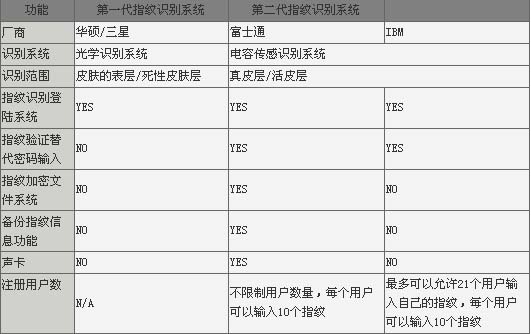|
|
|
说明:双击或选中下面任意单词,将显示该词的音标、读音、翻译等;选中中文或多个词,将显示翻译。
|
|
|
1) passive fingerprinting

被动指纹识别
1.
The dynamic honeypot is a kind of plug and play system by using passive fingerprinting and virtual honeypots.
该蜜罐系统主要使用了被动指纹识别技术和虚拟蜜罐技术。
2) passive fingerprinting identification technology

被动指纹识别技术
1.
This paper analyzes the problems existing in current intrusion detection system,and probes into the application of passive fingerprinting identification technology in the intrusion detection system.
分析了当前入侵检测系统所存在的问题,探讨了被动指纹识别技术在入侵检测系统中的应用。
3) Automated Fingerprint Identification

自动指纹识别
1.
An Automated Fingerprint Identification System Based on Internet;

基于网络的自动指纹识别系统
4) automatic fingerprint identification

自动指纹识别
1.
Analysis and Design on the Algorithms of Automatic Fingerprint Identification;

自动指纹识别算法分析与设计
2.
This paper analyzes the drawbacks existing in traditional reader’s card used in library, and expounds the advantages and implementing process of applying automatic fingerprint identification technology in library.
分析了图书馆使用传统的读者借阅证卡存在的弊端,阐述了图书馆应用自动指纹识别技术的优点及其实现过程。
3.
So the research of an automatic fingerprint identification system (AFIS) has important technical value and practical value.
因此,对自动指纹识别的研究具有重要的学术意义和实用价值。
5) automatic fingerprint verification

自动指纹识别
1.
This paper introduce a solution that implement automatic fingerprint verification algorithm on embedded system.
本文介绍了一种自动指纹识别算法在嵌入式系统上的实现方案。
6) automatic fingerprint-discerning

指纹自动识别
1.
The essay discusses the ways to solve the problems of the automatic fingerprint-discerning system existing in the application in the reconnaissance and detection.
本文通过对目前指纹自动识别系统在侦察破案应用中存在的问题和解决办法的讨论,针对因历史原因造成的,当前各地指纹系统不统一,无法兼容问题及智能化,系统扩展等诸多影响指纹工作的开展和效能提升的问题,进行粗浅的探讨,以期夯实指纹工作的基础,提高指纹工作的实效,为侦察破案、打击犯罪提供有力保障。
补充资料:指纹识别
现在的计算机应用中,包括许多非常机密的文件保护,大都使用“用户ID+密码”的方法来进行用户的身份认证和访问控制。但是,如果一旦密码忘记,或被别人窃取,计算机系统以及文件的安全问题就受到了威胁。 随着科技的进步,指纹识别技术已经开始慢慢进入计算机世界中。目前许多公司和研究机构都在指纹识别技术领域取得了很大突破性进展,推出许多指纹识别与传统IT技术完美结合的应用产品,这些产品已经被越来越多的用户所认可。指纹识别技术多用于对安全性要求比较高的商务领域,而在商务移动办公领域颇具建树的富士通、三星及IBM等国际知名品牌都拥有技术与应用较为成熟的指纹识别系统,下面就对指纹识别系统在笔记本电脑中的应用进行简单介绍。 众所周知,在两年前就有部分品牌的笔记本采用指纹识别技术用于用户登录时的身份鉴定,但是,当时推出的指纹系统属于光学识别系统,按照现在的说法,应该属于第一代指纹识别技术。光学指纹识别系统由于光不能穿透皮肤表层(死性皮肤层),所以只能够扫描手指皮肤的表面,或者扫描到死性皮肤层,但不能深入真皮层。 在这种情况下,手指表面的干净程度,直接影响到识别的效果。如果,用户手指上粘了较多的灰尘,可能就会出现识别出错的情况。并且,如果人们按照手指,做一个指纹手模,也可能通过识别系统,对于用户而言,使用起来不是很安全和稳定。 发展到今天,富士通和IBM等国际领先品牌的笔记本电脑开始采用第二代指纹识别系统,改变以前指纹识别容易出错和不稳定的缺点。新一代的指纹系统采用了电容传感器技术,并采用了小信号来创建山脉状指纹图像的半导体设备。指纹识别器的电容传感器发出电子信号,电子信号将穿过手指的表面和死性皮肤层,而达到手指皮肤的活体层(真皮层),直接读取指纹图案,从而大大提高了系统的安全性。  指纹识别技术对比 指纹识别技术对比
说明:补充资料仅用于学习参考,请勿用于其它任何用途。
参考词条
|








 指纹识别技术对比
指纹识别技术对比